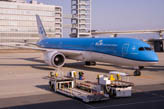Understanding Air Freight Charges for Exporting Goods
Exporting goods via air freight is a popular and efficient method for transporting goods, especially for products that require timely delivery. However, understanding the associated costs is crucial to ensure profitability. This article will guide you through the key aspects of air freight charges and how they impact your business.
What Are Air Freight Charges?
Air freight charges, also known as air freight costs, consist of several components. These include the basic freight rate, which is the cost per kilogram or pound of the goods, handling charges, packaging fees, and any additional taxes or duties. These charges ensure that your goods are transported safely and efficiently, meeting the high standards expected in international trade.
Factors Influencing Air Freight Costs
Several factors can affect the total air freight charges. The weight and size of the goods, as well as their value, will influence the base freight rate. The distance between the origin and destination also plays a significant role, with longer distances typically resulting in higher costs. Additionally, the chosen carrier, packaging requirements, and any special handling instructions can add to the overall expense.
Tips for Minimizing Air Freight Costs
To reduce air freight charges, consider optimizing your packaging to meet the carrier's requirements. Ship lighter goods in appropriate packaging to avoid extra handling fees. Comparing quotes from multiple carriers can help you identify the most cost-effective option for your specific needs. By understanding these factors, you can make informed decisions to streamline your logistics and enhance profitability.
In conclusion, air freight charges are an essential aspect of exporting goods. By understanding the components and factors influencing these costs, you can make informed decisions to optimize your logistics and ensure the success of your international trade operations.
